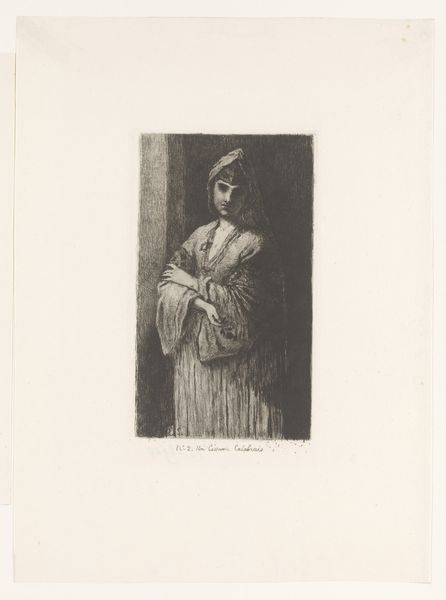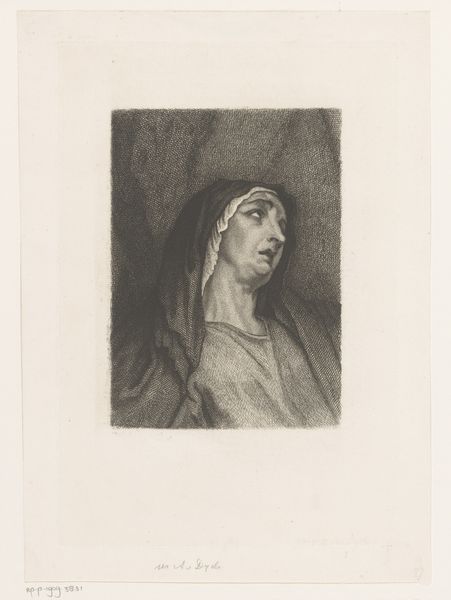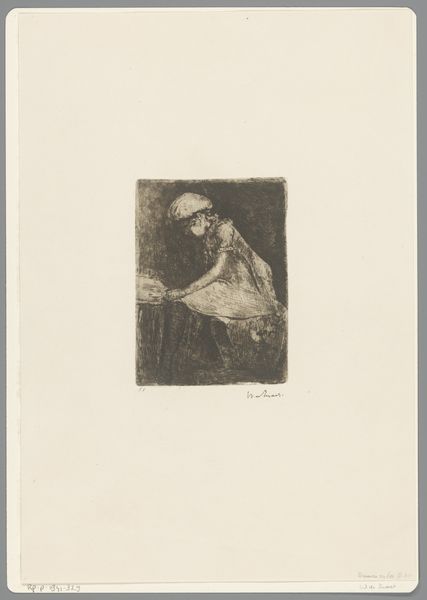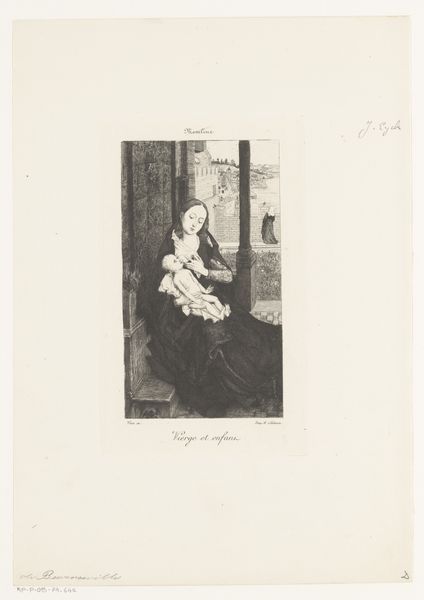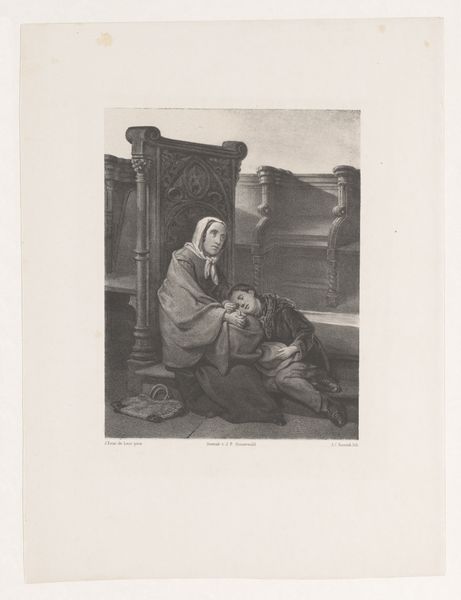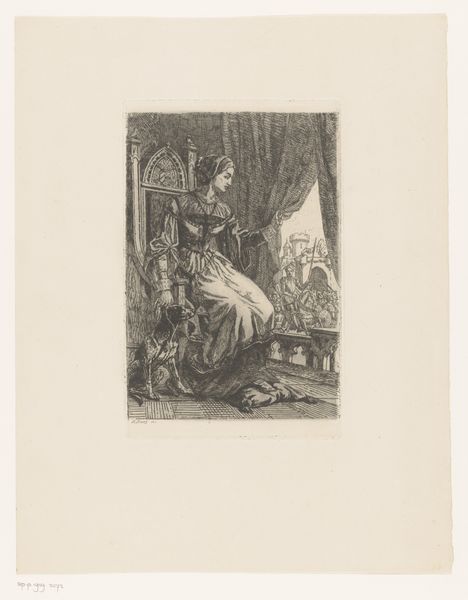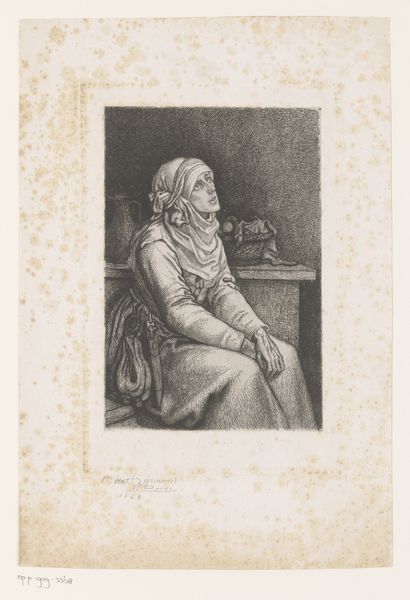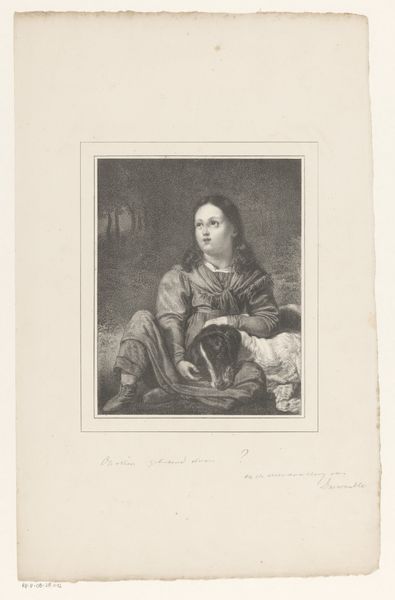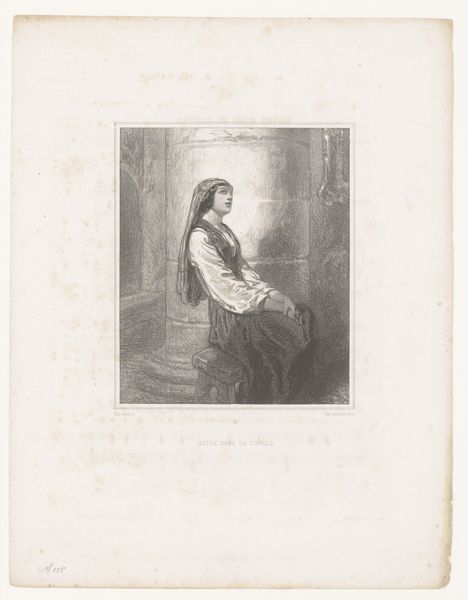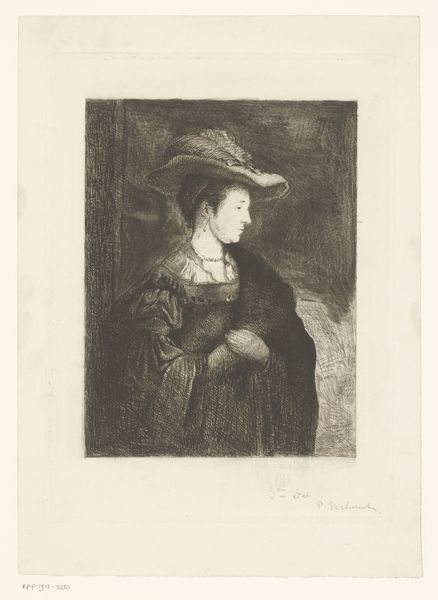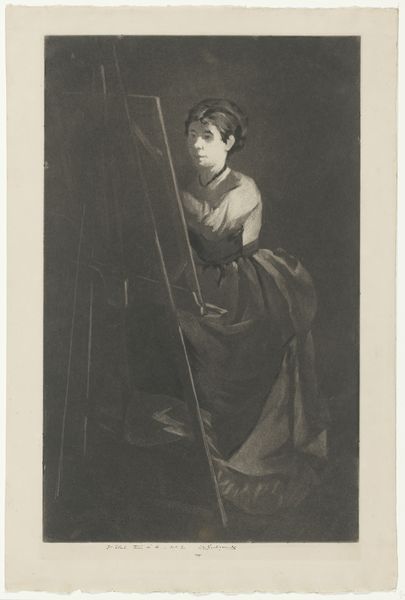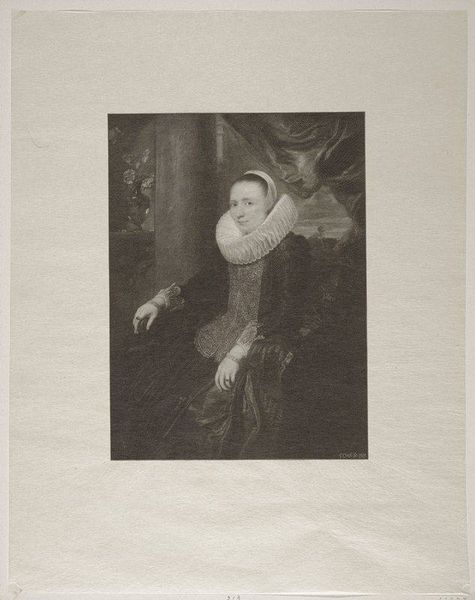
Dimensions: height 364 mm, width 256 mm
Copyright: Rijks Museum: Open Domain
Curator: Here we have François de Meersman’s "Resting Musician with Castanets and Tambourine," an etching from 1885. The immediate impression it gives is one of quiet melancholy, wouldn't you say? Editor: Indeed, a profound exhaustion seems to emanate from her figure. I see it also as representative of the exploitation of female artists and performers of the era; they were literally played out and worn down. What’s fascinating here is de Meersman’s handling of printmaking—the tools and process speak directly to me about how gender and labor were rendered visible, or invisible, through art production. Curator: Let's talk about those materials for a moment. The use of etching to capture the scene, it lends itself to such fine detail, look at the delicate rendering of the pearls and the texture of the clothing. The ink itself becomes almost tactile; one can practically feel the weight of her exhaustion translated through those heavy shadows. How do you read that from a social point of view? Editor: It reads to me that those ‘delicate renderings’ belie something. I notice how de Meersman has meticulously depicted the material elements – beads, clothes, and instruments – as if to highlight the objects with which she's burdened or entrapped. Curator: You make a really great point regarding burden. The genre painting is very revealing and shows the expectations in this era regarding women who were performers or, artists or creators themselves. The artwork seems almost staged; one begins to question if the artist understood the emotional demands and impositions of those eras. Editor: Exactly, this era romanticized so-called leisure in a way that hid the realities. Her slumped posture, the barely held tambourine – these visual cues become powerful tools to show labor's heavy costs and the limits placed on women expressing them freely or outwardly. Curator: Perhaps what the print gains from its materiality it speaks to themes around gender and performance. In this artwork we see that materiality really drives a much wider reading and makes way for that conversation. It is rather thought-provoking how these tools become ways of showing and questioning so much. Editor: Precisely. It pushes us to examine those underlying tensions; it compels us to bring a more intersectional gaze to the artist's labor within specific cultural confines.
Comments
No comments
Be the first to comment and join the conversation on the ultimate creative platform.

